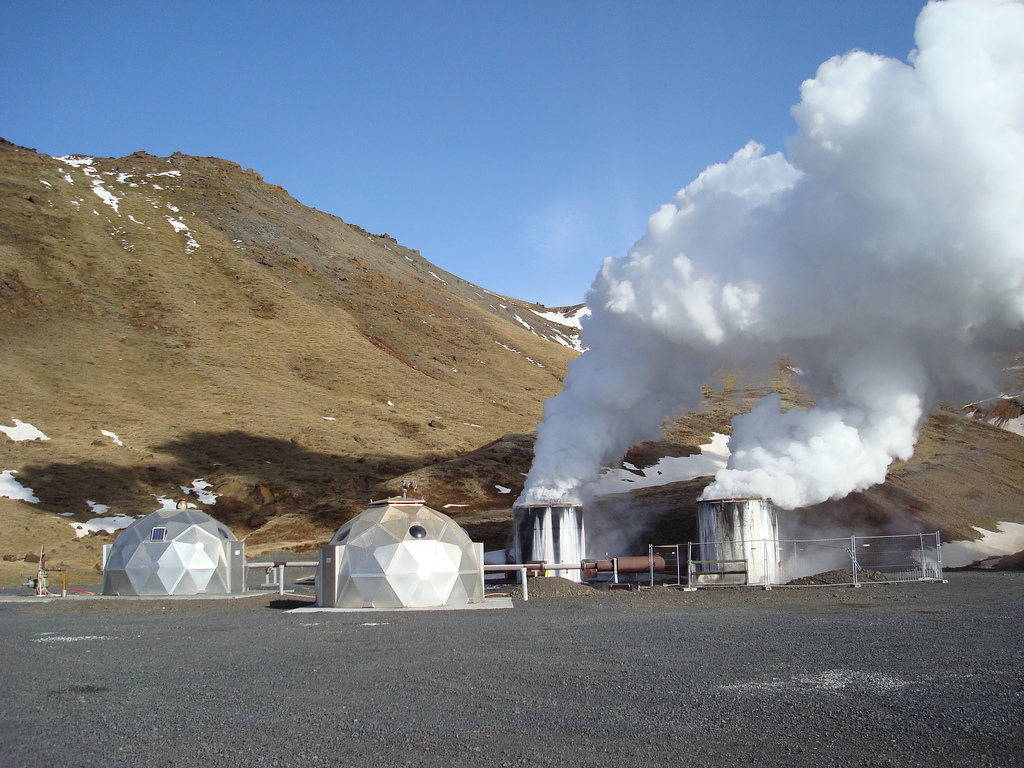Carbon storage experiment about to start at Hellisheidi geothermal plant in Iceland
The carbon storage project CarbFix at the Hellisheidi geothermal power plant in Iceland is about to start next month and will "assess the viability of storing carbon pollution underground by artificially creating seams of limestone.
The carbon storage project CarbFix at the Hellisheidi geothermal power plant in Iceland is about to start next month and will “assess the viability of storing carbon pollution underground by artificially creating seams of limestone.
If it is successful, the carbon dioxide pumped down into the basalt rock will turn into limestone and be locked away underground forever. The technique involves creating so-called seltzer water which reacts with basalt and forces the dissolved CO2 into harmless limestone.
CarbFix is a joint American and Icelandic venture, the organisers of which say they are looking to the long-term and are not expecting any miracle results. The experiment will last six months to one year, but is only the first stage.
What marks the Icelandic experiment apart from other carbon storage projects is that turning the CO2 into stone means it will not escape back into the atmosphere, as is feared with underground gas storage; such as in Norway where natural gas is being deliberately replaced underground by CO2.
The basalt, which is ancient volcanic lava, is porous, and contains as much as 30 percent open space and water. The seltzer water is to be forced into the pores and will hopefully react with the calcium in the basalt to form calcium carbonate, otherwise known as limestone.
The short term goal is to allow geothermal power stations to get rid of the carbon dioxide they bring up from the depths and thereby become truly carbon neutral. Project organisers are cautiously allowing themselves to imagine the wider potential of the technique if the experiment goes well.
Huge areas of the world’s land sit on top of basalt, meaning the technique could be carried out on a massive scale as a measure in the fight against harmful climate change.
“My vision for carbon capture and storage is offshore, below the sea. The whole ocean floor is basalt below the sediments,” said Swiss geochemist and CarbFix manager Juerg Matter.
Almost half of the USD 10 million project is funded by Reykjavik Energy and other funding comes from two universities, France’s National Centre of Scientific Research, the US Energy Department, the European Union and from Scandinavian funds.”
Source: IceNews


















